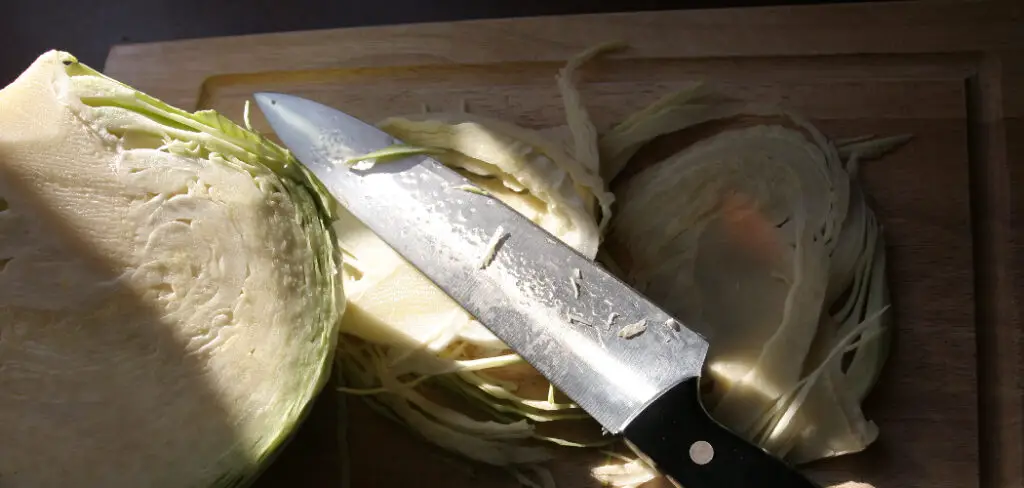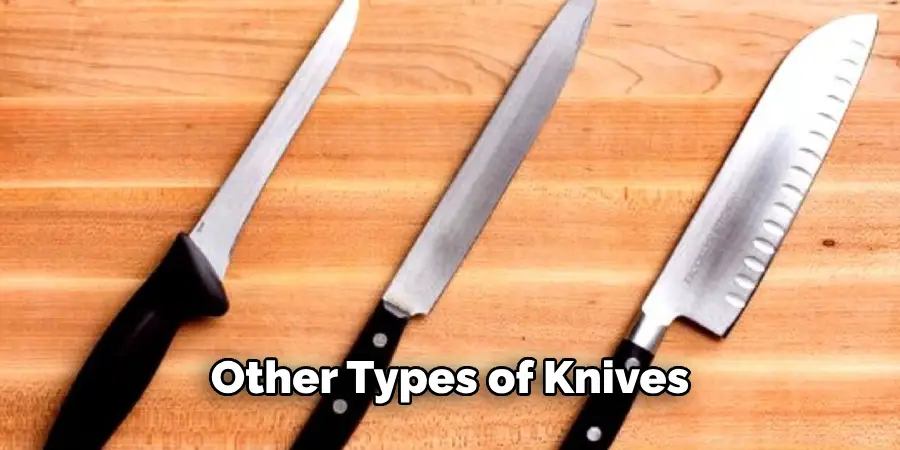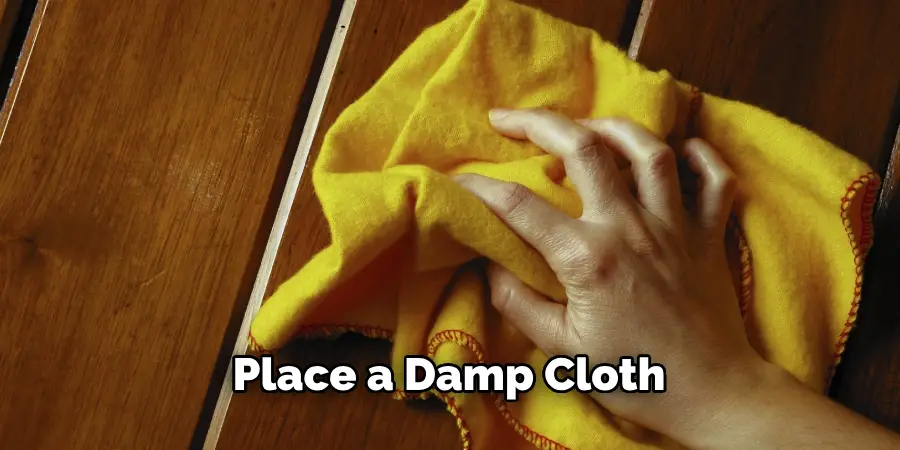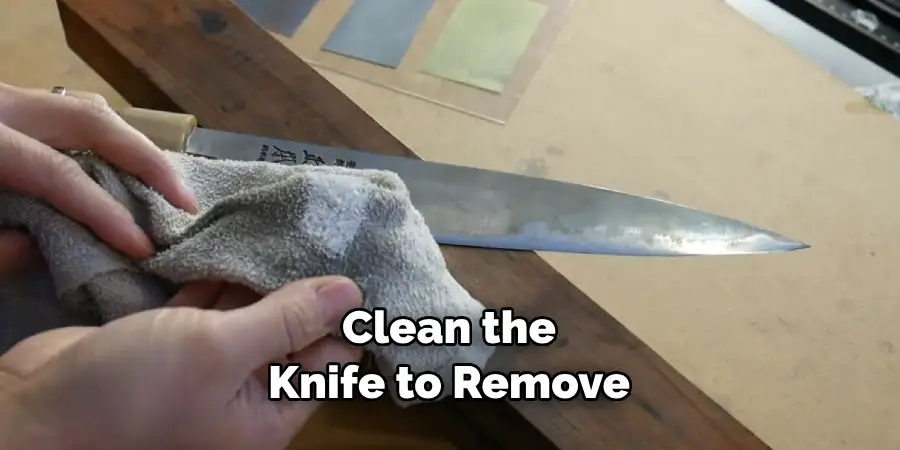If you want to keep your knives and other cutting tools sharp, there’s one kind of steel that’s tough to beat – stainless steel. With a hardened steel blade, your knife is sure to maintain its razor-sharp edge for years to come. But before you can enjoy the many benefits of owning a stainless steel knife, you need to learn the best way to sharpen it.

We’ll discuss how to sharpen a stainless steel knife, everything from basic maintenance techniques such as honing and stropping, all the way up through using professional-grade wet stones or power grinders. So whether you’re looking for convenience or precision control over how sharp your blade gets – this comprehensive guide has got everything that you need!
The Importance of Maintaining a Sharp Stainless Steel Knife
Having a sharp stainless steel knife is essential for getting the most out of your kitchen. A dull knife will not only make cutting and slicing difficult, but it can also lead to injury as you will need to apply more pressure than necessary when using it. Maintaining a sharp knife is important for safety reasons and also helps preserve the longevity of your knives.
A sharp stainless steel knife also offers better performance when cutting, slicing and chopping. This makes it easier to create precise cuts for a beautiful presentation of your food. The sharper the blade, the more enjoyable and efficient your cooking experience will be! With proper care and maintenance, you can ensure that your stainless steel knives remain razor-sharp for many years to come.
Understanding the Unique Properties of Stainless Steel Blades
When it comes to sharpening a stainless steel knife, it is important to understand the unique properties of the stainless steel blade. Stainless steel blades are extremely durable and strong, but due to their composition, they can be more difficult to sharpen than other types of knives. When sharpening a stainless steel knife, you must use a special technique and follow certain steps in order to properly sharpen the blade while not damaging it.

Stainless steel blades are composed of a variety of alloys, most commonly including chromium and nickel. This combination makes stainless steel blades highly resistant to corrosion and rust, which is why they are so durable. However, this also means that when sharpening them you must be careful not to exert too much force and damage the blade. Additionally, stainless steel blades are more prone to overheating when sharpening than other materials, so it is important to take extra care not to overheat the blade while sharpening.
Identifying Signs of a Dull Stainless Steel Knife
Stainless steel knives may become dull over time due to regular use. To determine whether or not your stainless steel knife is dull, you can perform a few simple tests at home. The most useful technique is the paper test, which involves cutting through a sheet of paper with your knife. If the blade slides smoothly and quickly through the paper without any resistance, it is still sharp.
However, if the paper does not immediately separate when you cut it or if the knife feels like it is getting stuck in the paper rather than cutting through it, that means your blade has become dull and needs to be sharpened. Another test you can perform is slicing a soft tomato – a sharp knife should easily slice all the way through without tearing or crushing any pieces of the skin.

If your blade struggles to get through, then it’s time for sharpening. Finally, try pressing your finger against the edge of the blade – if you don’t feel a particularly sharp edge when doing this, then you know for sure that your knife has become dull.
Understanding the Knife’s Bevel and Edge Geometry
When sharpening a stainless steel knife, it is important to understand the bevel and edge geometry of the blade. The bevel of a knife is the area where the blade tapers from its spine down to its cutting edge. Most knives have two bevels, one on each side of the blade. The angle between these two bevels determines how sharp your knife will become. You can adjust this angle depending on how you want your knife to cut.
The edge geometry refers to how the sharpened metal meets at the apex (tip) of your blade. It’s important to get an even grind across both sides so that they meet perfectly at the tip in order for it to be effectively sharpened. Depending on the type of knife you have, the edge geometry can range from a flat grind to a chisel grind. You should research your particular knife before sharpening it so that you know what kind of edge geometry it has and how to sharpen it properly.
10 Steps How to Sharpen a Stainless Steel Knife
Step 1: Gather the Necessary Tools
Before you begin, gather the necessary tools for sharpening your stainless steel knife. This includes a sharpening stone or whetstone, honing oil or water (depending on the type of stone), a damp cloth, and a towel or cutting board to protect the surface.
Step 2: Prepare the Sharpening Stone
If you are using a whetstone, soak it in water for about 10-15 minutes to ensure it is properly saturated. If you are using an oil stone, apply a few drops of honing oil to the surface of the stone and spread it evenly.
Step 3: Determine the Sharpening Angle
Identify the angle at which your knife’s edge is sharpened. Most stainless steel knives have a bevel angle between 15 and 20 degrees. It’s crucial to maintain consistency in the sharpening angle throughout the process.
Step 4: Secure the Knife
Place a damp cloth or towel on a stable surface to prevent the stone from slipping. Hold the knife securely with your dominant hand and position it on the stone, ensuring the blade’s edge is in contact with the stone at the desired sharpening angle.

Step 5: Start with Coarse Grit
Begin the sharpening process using the coarse grit side of the stone. Using light pressure, slide the knife’s edge across the stone in a sweeping motion, moving from the base to the tip. Maintain a consistent angle and evenly distribute the pressure along the entire length of the blade. Move the knife back and forth across the stone at least 10 times. However, if there are any deep nicks or scratches to remove, you may need to repeat the process for up to 20 strokes.
Step 6: Maintain a Fluid Motion
Maintain a fluid and continuous motion while sharpening. Ensure that the entire length of the blade is in contact with the stone during each stroke. Repeat this process for several strokes on one side of the blade before moving to the other side. Maintain the same angle of approximately 15 degrees when sharpening. If you maintain a fluid motion, your knife will be sharpened evenly and quickly.
Step 7: Check for Burrs
Periodically check for burrs or metal particles that accumulate on the opposite side of the sharpened edge. Run your finger gently along the edge to detect any rough areas. If you feel a burr, continue sharpening until the burr is removed.
Step 8: Progress to Finer Grit
Once you are satisfied with the sharpness achieved with the coarse grit, flip the stone to the finer grit side. Repeat the sharpening process described in Step 5 and Step 6 using the finer grit. This helps refine the edge and achieve a polished finish.
Step 9: Hone the Edge
After sharpening, it’s important to hone the edge of the knife. Use a honing rod or sharpening steel to realign and refine the edge. Hold the rod at a slight angle and glide the knife’s edge along the rod, applying light pressure. Repeat this motion several times on each side of the blade.
Step 10: Clean and Test
Once you have finished sharpening and honing, clean the knife to remove any metal particles or residue. Rinse the blade under running water and dry it thoroughly. Finally, test the sharpness of the knife by performing the paper test or cutting through various ingredients. A sharp knife will effortlessly slice through with precision.

Conclusion
Sharpening a stainless steel knife does not have to be a difficult process. It is important to use the right type of stone when beginning and most importantly, take your time and work in sections. Remember that all knives need regular sharpening so make this task part of your regular routine maintenance. You are now an expert on how to sharpen a stainless steel knife and can count on having success during each sharpening session.
Get into this new routine and you will ensure that your knives remain precision cutters for years to come! No matter what kind of knife you’re using or the end goal in mind, it’s worthwhile to sharpen up your skills with a steel sharpener or stone and bring out the best performance in each blade.
Professional Focus
Angela Ervin, a former interior designer turned blogger, specializes in kitchen design and renovations. Through her website, she blends her passion for cooking with design expertise, sharing practical and creative ideas. Known for balancing functionality and beauty, Angela’s insightful content has made her a trusted voice in home design and lifestyle.
About the Author
Angela Ervin, an experienced interior designer and blogger, combines her passion for kitchen renovations with storytelling. Living in Petersburg with her family, she enjoys cooking and testing her projects firsthand. Known for her humor and relatable style, Angela shares creative, functional design insights through her content, making her a trusted voice in home design.
Education History
University: Virginia Commonwealth University
Degree: Bachelor of Fine Arts (BFA) in Interior Design
- Angela’s education at VCU focused on mastering core interior design principles, including spatial planning, color theory, materials selection, and sustainable design practices.
- She gained hands-on experience through studio projects and collaborative design exercises, which honed her ability to create functional and aesthetically pleasing environments.
- Her coursework also emphasized problem-solving and practical applications of design, preparing her for real-world projects like her self-directed kitchen renovations.
- The program’s strong foundation in both technical skills and creative expression shaped Angela’s ability to seamlessly integrate form and function in her work.


